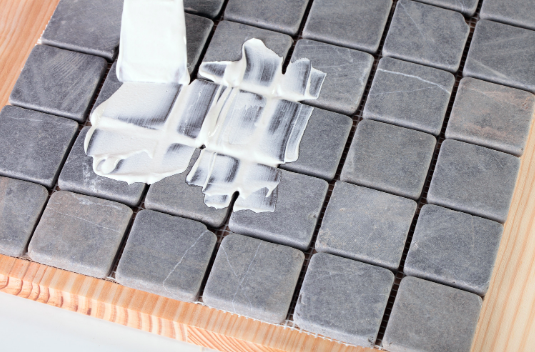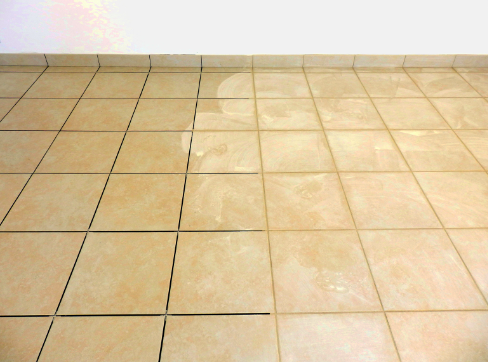Last Updated on November 9, 2022 by mdmtool
Grout is a compound that helps fill or protect the space between tiles. Two main types of grout used in tiling projects are sanded grout and unsanded grout. These can be used for functional as well as decorative purposes. Other than that, you should be aware of a few key differences between the two types of grout before beginning your next tiling project.
What Is Sanded Grout?

Sanded grout is a type of grout that contains sand. The sand gives the grout a coarser texture, making it ideal for use with larger tiles or in areas with more foot traffic.
What Is Unsanded Grout?

Unsanded grout is a type of grout that does not contain sand. The lack of sand gives the grout a smoother texture.
Difference Between Sanded Grout And Unsanded Grout
Suitable: Sanded grout is ideal for use with larger tiles or in areas with more foot traffic. Unsanded grout is ideal for use with smaller tiles or in areas with less foot traffic.
Texture: Sanded grout has a coarser texture due to the presence of sand. Unsanded grout has a smoother texture since it does not contain sand.
Shrinkage: Sanded grout is less likely to shrink than unsanded grout. Unsanded grout is more likely to shrink than sanded grout.
Mixing Ratio: The mixing ratio for sanded grout is 1 part grout to 1.5 parts water, while the mixing ratio for unsanded grout is 1 part grout to 2 parts water.

Curing Time: Sanded grout needs to fix for 24 hours before it is scorched, while unsanded grout only needs to cure for 12 hours.
Clean up: Sanded grout is more complex than unsanded grout since the sand can clog up your sponge. Unsanded grout is easier to clean since there is no sand to worry about.
Color: Sanded grout is available in various colors, including white, gray, black, and brown. Unsanded grout is only available in a limited number of colors, including white and gray.
Appearance: Sanded grout has a more polished appearance than unsanded grout.
Suitability: Sanded grout is more suitable for indoor use, while unsanded grout is used indoors and outdoors.
Final Color: Sanded grout will darken as it dries, while unsanded grout will lighten.
DIY Skill Level: Both sanded grout and unsanded grout are easy to use and have a DIY skill level.
Grout Widths & Joint Sizes: Sanded grout is usually used for 1/8″ or broader joints. Unsanded grout can be used for 1/8″ or down to 1/16″ or smaller joints.
Cost: Sanded grout is usually more expensive than unsanded grout.
Application: Sanded grout can be applied with a sponge or a grout float, while unsanded grout should only be used with a sponge.

When To Use Sanded Grout
- Large tiles
- Areas of high traffic
- Projects where a tight fit is important
When To Use Unsanded Grout
- Smaller tiles
- Areas of low traffic
- Projects where a tight fit is not as important
Consequences Of Incorrect Application
- Tiles may become loose
- Grout may crack or break
- Difficulty in cleaning up
Recommended Uses Of Sanded And Unsanded Tile Grout
- Sanded grout is ideal for kitchen backsplashes, floors, showers, and bathrooms
- Unsanded grout is ideal for kitchen countertops, walls, and backsplashes
Advantages & Disadvantages
Advantages Of Sanded Grout
- Stronger and more durable
- Less likely to shrink
- More color options
Disadvantages Of Sanded Grout
- More difficult to clean up
- It can clog up your sponge
- More expensive
Advantages Of Unsanded Grout
- Easy to clean up
- More color options
Disadvantages Of Unsanded Grout
- Can shrink more easily
- More expensive
FAQs
Can Sanded Grout Be Used On Textured Surfaces?
Sanded grout is often used on textured surfaces to help fill in any voids or irregularities. On the other hand, unsanded grout is typically used for smoother surfaces where there is less risk of the grout becoming uneven.
How Do I Choose The Suitable Grout For My Project?
The best way to choose the right grout for your project is to consult with a professional. They will be able to assess your needs and recommend the best type of grout for the job.
Is It Necessary To Seal Sanded Tile Grouts?
Yes, it is necessary to seal sanded tile grouts to protect them from stains and other damage. Unsanded grouts do not need to be filled.
How Often Should I Seal My Sanded Tile Grout?
Your sanded tile grout should be sealed every 6-12 months to keep it looking its best.
Conclusion
When deciding whether to use sanded or unsanded grout, it is important to consider the tile surface, the joint size, and the environment where the grout will be used. Sanded grout is generally more durable and easier to use than unsanded grout. However, unsanded grout is typically less expensive and easier to clean. Ultimately, your project’s best type of grout will depend on your specific needs and preferences.





